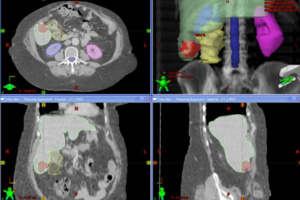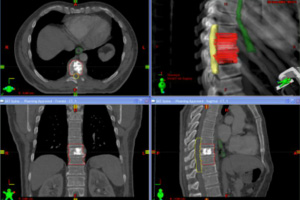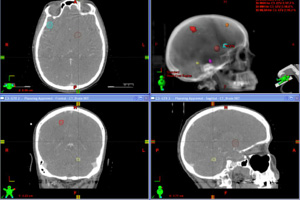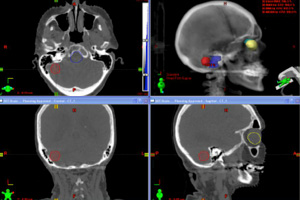Stereotactic Radiosurgery (SRS) Or Stereotactic Radiotherapy (SRT) Of The Brain
Stereotactic Radiosurgery (SRS) or Stereotactic Radiotherapy (SRT) is the use of high doses of radiation delivered to an extremely small volume within the brain. The treatment typically lasts longer than a normal treatment; however, it is delivered between one to five fractions or sessions and is best for very small tumors.
Beverly Hills Cancer Center radiation oncologists use very specialized imaging equipment to pinpoint exactly where the cancer cells are. They monitor the area of the cancer and other organs on a screen while treatment is taking place.
A customized holder may be used to keep the area to be treated perfectly still during treatment. Combining the specialized imaging and the custom holder allows doctors to give a high dose of radiation to the tumor in a short amount of time.
SRT is commonly used for the following conditions:
- Cancers that spread to the brain (brain metastases) from tumors originating in other parts of the body.
- Cancers that start in the brain (gliomas and other brain tumors).
- Benign tumors that arise from the lining of the brain (meningiomas or acoustic neuromas).
- Cancers in the brain that already received radiation previously and surgery is not an option.
SRT may be useful for other cancers not readily addressed with surgery or conventional radiation therapy. Patients with tumors that are small and few in number are the best candidates for SRT. Your radiation oncologist can tell you whether SRT is an option for your specific condition as new research continues to broaden the use of this technology.







